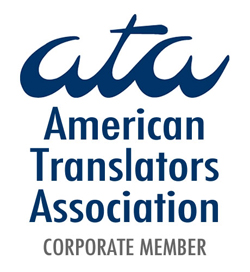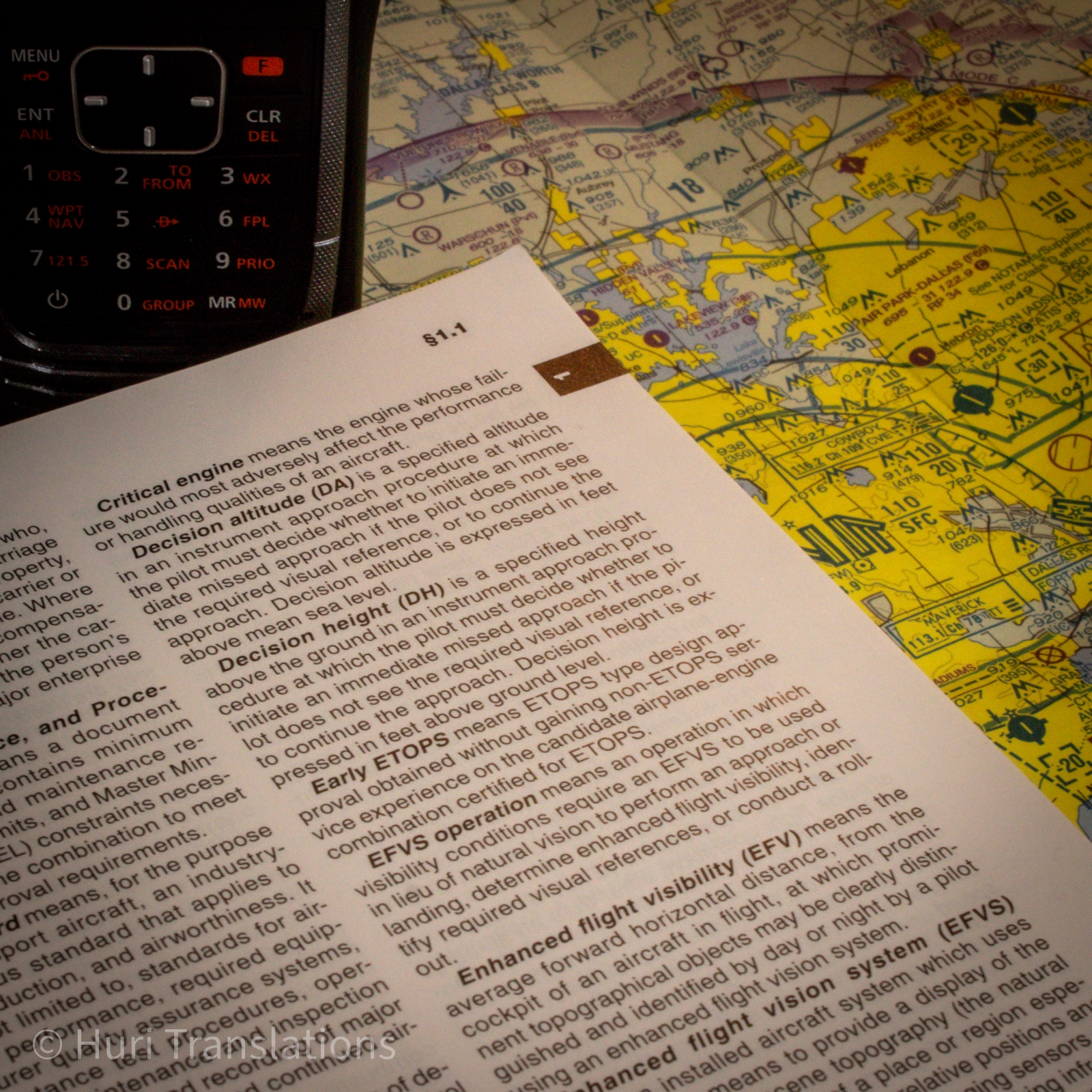
We also accept payments via Paypal
Huri Translations
Tel. +689 89 205 483
info@huri-translations.pf
PO BOX 365 Maharepa
98728 Mo'orea
French Polynesia
N°TAHITI 876649
Subscribe to our newsletter


These communication challenges become most apparent during specific phases of flight. Air traffic controllers report that non-standard phraseology occurs most frequently during route clearances and en-route communications. Pilots, however, note that such variations are common during takeoff, approach, and landing clearances - critical phases of flight where clear communication is a must.
The maritime industry faces similar challenges, though with its own unique complexities like for aviation. For example, there's a clear divide between nautical operations and marine engineering as each field has its own vocabulary. While both fall under Maritime English, they serve different operational needs. Nautical English focuses on navigation and inter-vessel communication, while Marine Engineering English deals with mechanical systems and internal operations.
The technical nature of these special language areas becomes apparent in vocabulary analysis. Aviation communications require strict adherence to standard phraseology, with controllers and pilots needing to master both standard terms as well as their possible non-standard interpretations. And we're not yet talking about the engineering field or navigation. To put this into perspective, in maritime operations a proficient reader will need to know about 14,000 English words to adequately comprehend nautical texts, while marine engineering texts require knowledge of about 8,000 words.
The challenges multiply when considering that both industries operate globally with crews and controllers from diverse linguistic and cultural backgrounds. In aviation, studies show that miscommunications occur more frequently among non-native English speakers, though native speakers aren't immune to communication errors either. The International Civil Aviation Organization (ICAO) emphasizes standard phraseology for all users, regardless of their English proficiency level.
For professional translators working in these domains, these findings have clear implications. First, they must recognize that technical translation in aviation and maritime fields requires more than linguistic expertise. It demands solid knowledge of each field and awareness on how standard phrases can be misinterpreted. A translator working on air traffic control communications needs to understand not just the words, but the operational context and potential safety implications of each phrase. Translators of aviation and maritime documents are often pilots, captains and traffic controllers themselves.
Second, translators must be aware of how terms can shift meaning across contexts within a given domain. A term that means one thing in air traffic control might carry a different meaning in, say, aircraft maintenance documentation. For example, the Federal Aviation Regulations of the US FAA establishes a definition for term "Positive Rate" in the context of drug and alcohol testing: In Title 14 - Aeronautics and Space, Part 120, "Positive rate for random drug testing means the number of verified positive results for random drug tests conducted under subpart E of this part, plus the number of refusals of random drug tests required by subpart E of this part, divided by the total section, the minimum annual percentage rate for random drug testing shall be 50 percent of covered employees". This definition of "Positive rate" in the aviation context has nothing to do with the "Positive rate" announcement that pilots call out upon takeoff. This polysemy requires careful attention to context and domain-specific usage.
Third, these specialized lexicons are constantly evolving as technology and practices change. Aviation communications must adapt to new air traffic management systems and procedures, while maritime texts now include terminology related to smart applications and automation.
The challenge for language professionals is to maintain the delicate balance between standardization and practical usage. While both industries strive for "maximum clarity, brevity, and unambiguity," the reality of global communications means that variations and non-standard uses will occur. Understanding these patterns and potential points of confusion is paramount to deliver accurate technical translations.
For language service providers like Huri Translations, this underscores the importance of specialized expertise in technical translation. Generic translation skills are clearly insufficient when dealing with such highly specialized domains, even when public terminology database access (think the EU's IATE termbase) is available. Translators working in aviation or maritime fields need not only strong language skills but also thorough knowledge of industry-specific terminology, operations, and potential communication pitfalls linked to psychology and cross-border cultures.
As our world becomes increasingly connected through air and sea travel, the role of precise technical communication and by extension, accurate technical translation becomes ever more primordial to transport passengers and cargo safely.

Aviation and maritime operations are high-stake domains that share a common challenge - the need for precise, unambiguous communication in English. This is because English is, of course, the language of commerce historically. Recent studies of cockpit voice recordings and air traffic control communications reveal that even standardized phraseology can lead to potentially dangerous misunderstandings when used in non-standard ways.
"recognize that technical translation in aviation and maritime fields requires more than linguistic expertise"
In aviation, seemingly simple phrases can create significant confusion. The instruction "go ahead" should strictly mean "proceed with your message," but pilots sometimes interpret it as permission to move forward - a dangerous misunderstanding on an active runway. Similarly, "hold short" has caused incidents when its meaning was unclear. Even the word "affirm," meant to be a clear "yes," can be problematic when pilots use "affirmative" instead, as it could be misheard as "negative". Student pilots learn that there is a usage to terms employed for, say, the weather: The direction of the wind is expressed as the direction from where it is blowing, not the direction where it is going.
Aviation and Maritime English: Challenges in Technical Communication
